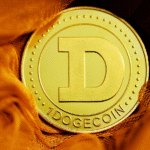
Blockchain networks evolve through updates, but implementing changes isn’t always straightforward. Unlike traditional software, where updates are centrally controlled, blockchain operates on decentralized consensus.
Any modification to the protocol requires agreement among network participants, often leading to forks. These forks can be classified into two types: hard and soft forks, each with different implications for the network and its users.
Hard Fork: A Permanent Split in the Blockchain
A hard fork occurs when a blockchain undergoes a fundamental change incompatible with previous versions. It creates a permanent divergence, forming two separate chains that follow different rules.
Nodes running the old software can no longer validate transactions on the updated chain, requiring all participants to upgrade to the new protocol to continue using the main network.
Key Characteristics Of A Hard Fork
Backward incompatibility: Older nodes cannot validate transactions under the new rules, requiring all participants to upgrade to the latest protocol.
Chain split: A hard fork generates a completely separate blockchain, often resulting in two independent cryptocurrencies.
Potential for New Tokens: Users holding coins on the original blockchain may receive an equivalent number of tokens on the new chain, depending on how the fork is structured.
Hard forks are often initiated for security upgrades, performance improvements, or ideological differences among developers and users. Some are contentious, leading to rival blockchains, while others are planned upgrades that gain majority support.
Notable Hard Forks
Bitcoin Cash (BCH): One of the most well-known hard forks, Bitcoin Cash split from Bitcoin in 2017 due to disagreements over block size limits.
Ethereum Classic (ETC): After the infamous DAO hack in 2016, Ethereum implemented a hard fork to reverse the exploit, creating a new Ethereum (ETH) chain while the original remained as Ethereum Classic (ETC).
Bitcoin SV (BSV): A fork of Bitcoin Cash, this split aimed to restore Satoshi Nakamoto’s original vision of Bitcoin with larger block sizes.
Hard forks are often contentious, leading to division within communities and competing visions for a blockchain’s future. While some hard forks result in successful new projects, others fade due to a lack of adoption and developer support.
Soft Fork: A Compatible Upgrade
A soft fork is a protocol update that remains compatible with previous versions. Nodes running older software can still validate transactions, but they may not recognize new features introduced by the upgrade. Since a soft fork does not create a chain split, it is often preferred for minor improvements or security patches.
Key Characteristics Of A Soft Fork
Backward Compatibility: Older nodes remain functional within the network, even if they do not recognize new rules.
Single Blockchain Continuation: Unlike a hard fork, a soft fork does not split the blockchain, keeping all participants on the same chain.
Gradual Adoption: Since it does not require all nodes to upgrade immediately, a soft fork can be implemented with minimal disruption.
Notable Soft Forks
Segregated Witness (SegWit): One of the most significant Bitcoin soft forks, SegWit was implemented to improve scalability by restructuring transaction data.
Taproot Upgrade: This Bitcoin soft fork enhanced privacy, efficiency, and smart contract functionality, making transactions more flexible and secure.
Soft forks are generally preferred over hard forks since they do not cause chain splits, reducing the risk of network fragmentation and community division. However, their success depends on widespread adoption by miners and users.
How Forks Impact Investors and Traders
Understanding blockchain forks is crucial for anyone involved in cryptocurrency investing. Hard forks can present opportunities to receive free tokens, but they can also lead to volatility, confusion, and security risks. Soft forks, on the other hand, usually indicate a network improvement that enhances usability without significant disruption.
For investors, monitoring upcoming forks can provide insights into potential price movements and new investment opportunities. Exchanges and wallets may or may not support new tokens resulting from hard forks, making it essential to stay informed about the latest developments.
Kenson Investments provides expert insights and guidance to help navigate the complexities of the crypto market. Register now to explore opportunities in the evolving digital asset space today!
Disclaimer: The information provided on this page is for educational and informational purposes only and should not be construed as financial advice. Crypto currency assets involve inherent risks, and past performance is not indicative of future results. Always conduct thorough research and consult with a qualified financial advisor before making investment decisions.
“The crypto currency and digital asset space is an emerging asset class that has not yet been regulated by the SEC and US Federal Government. None of the information provided by Kenson LLC should be considered financial investment advice. Please consult your Registered Financial Advisor for guidance. Kenson LLC does not offer any products regulated by the SEC, including equities, registered securities, ETFs, stocks, bonds, or equivalents.”














